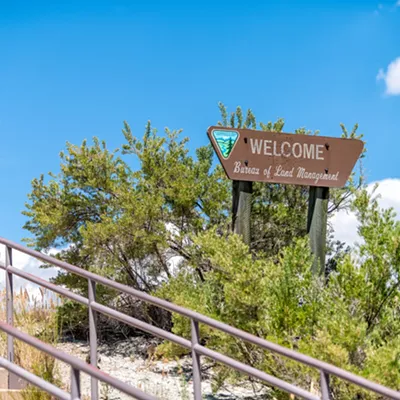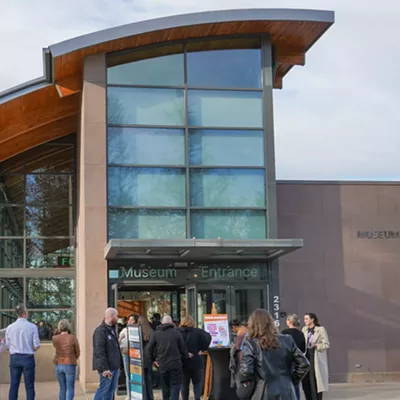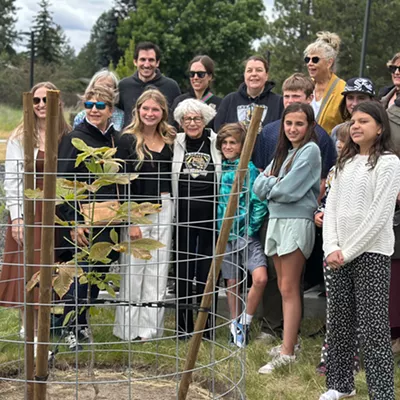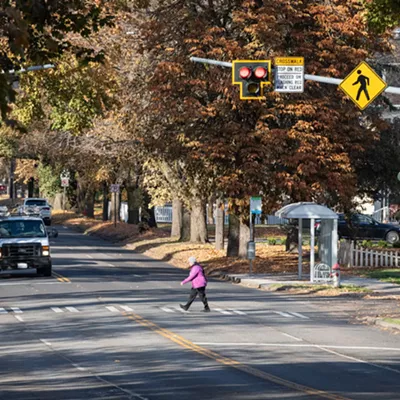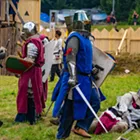It was the perfect respite from the land of snow and ice. Green plants, the sweet scent of hundreds of blooming plants, and chirping bird music in the background made THE NORTHWEST FLOWER AND GARDEN SHOW (which took place in Seattle in February) a welcome getaway from an Inland Northwest winter. This was the 13th season for the show, and in those 13 years, the show has grown from a local interest event to one of the six top garden shows in the world. Right up there with Boston, San Francisco and Philadelphia in the U.S. and the Chelsea and Hampton Court shows in the U.K. In fact, the Philadelphia Garden Show recently celebrated its 100th anniversary. Not bad company for an upstart.
The theme of this year's show was "A Path Through Beauty." Some of the Northwest's best plantsmen and designers created 27 magical and refreshing display gardens complete with thousands of blooming plants, massive stone works, garden structures and water features.
While each of the display gardens was unique, I noticed certain trends emerging. The most prominent one was that the garden is a place to relax, refresh and restore our contact with nature and our environment. Many of the garden designers created garden rooms that were intended to be places to come and sit at the end of the day, entertain guests or as outdoor offices for the telecommuter. Comfortable chairs were placed in an intimate space surrounded by plants, rockwork and many times a water feature with a fountain or small waterfall. In several cases, the garden rooms were an extension of the house tied together with similar flooring materials, doors that opened wide and windows that framed the garden like you would a picture. It was really hard not to climb over the barriers and go sit in one of the chairs for a while.
The second most notable trend was a strong concern for the impact of a garden on the environment. Many of the display gardens used recycled and salvaged materials in their structures, paving materials and ornamentation. Old building materials like windows, lumber and metal roofing were recycled into rustic garden structures and sitting spaces. At the garden of the King County Commission for Marketing Recycled Materials, the roofing of a pergola was made out of safety glass panels pulled from Metro bus shelters after they had been damaged. Other castoffs were reinvented as garden art and ornamentation.
One garden took a tractor-sized posthole auger and turned it into a vertical water feature with water running down the spiraled metal. Another used recycled colored glass to serve as light catchers throughout the garden. Anything from old chairs to children's toys to broken flowerpots is fair game.
Other designs took advantage of a whole new series of landscape and garden products made out of recycled junk like glass, plastic and wood. New plastic and wood composite lumbers were used in several displays for decking and structures. This lumber is made by binding ground wood scrap with recycled plastics to produce a lumber that can be used just like ordinary wood in garden applications. In addition to being recycled, it is touted to not warp or rot like real wood and can be painted and stained just like ordinary lumber.
Then there were several displays that used colored tiles made out of recycled glass. The tiles come in a range of subdued colors, perfect for adding a touch of color without overwhelming the natural colors of the garden.
The use of native plants or plants that are adapted to the local growing conditions was prominent in almost every garden. This is becoming a very important issue for gardeners as we look for ways to reduce work but even more importantly, reduce the amount of water, fertilizer and chemicals needed to maintain the garden. The water issue is HUGELY important this year everywhere in the Northwest after one of the driest winters on record.
Lastly, there is a growing trend to making a garden or landscape "bloom" all year round. This does not mean you would have flowers in bloom all year, but rather plants that have winter color or interesting shapes to their bare branches are added to the garden to give it color and texture in the winter. Here in the Inland Northwest, where we see a regular snow cover, shrubs and trees with colored stems or leaves that turn color are perfect choices. Two that come to mind are red-stemmed dogwood that has dark red stems and branches and tall Oregon grape whose holly-like leaves turn a burnished burgundy color in winter.
While this show was in Seattle and used many elements that are more readily available there than here in the Spokane/Coeur d'Alene area, there are many of these elements that would be easy to incorporate in our gardens. If you want to incorporate recycled elements in the garden, just look around your house or neighborhood. Make a run to Brown Building Supply under the Hamilton Street Bridge. This used building materials yard is a treasure trove of all things cast off -- just use your imagination as you look through the yard. Ask about remanufactured building materials at the hardware and lumber stores, as many of them are beginning to carry them. As you buy plants or do major landscaping projects this year, ask about native or adaptable plants as you talk to your nursery people. Many of the local nurseries are carrying a selection of native plants and can tell you which other plants can easily adapt to our growing conditions with a minimum of resource input.
The Best Garden Book Ever
The best garden book in the West just got better. In conjunction with the Northwest Flower and Garden Show in February, Sunset magazine rolled out the latest revision to its classic Western Garden Book. Long the undisputed authority on gardening in the Western U.S., this "New Century Edition" marks the eighth edition of the book since it was first published in 1932. This, without a doubt, is the most extensive and best refinement and expansion of the book to date.
The new book begins with an essay entitled, "Lessons of the Land," that, among other things, reminds the reader that when you garden, the land is your teacher and you will never be more than a student to be inspired by its lessons. Nearly 2,000 plants have been added to the 1995 edition of the "Plant Encyclopedia" section of the book. Many of them reflect the growing interest and availability of native plants. More color photos and drawings have been added to better illustrate garden styles and plants. The plant suggestion lists first introduced in the 1995 edition of the book have been expanded to give the gardener an even better range of plants to use in different situations in the garden, including plants to use in problem areas, basic landscaping, color and special situations.
The most extensive revisions and additions to this new edition are in its climate zone maps. First introduced in 1967, the maps quickly became the standard in the West for determining the types of plants that a gardener could use. Climatic data on winter minimum and summer maximum temperature, rainfall, humidity, proximity to the ocean or mountain ranges, elevation and latitude were collected and analyzed to produce 24 distinct climatic zones in the 11 western states. In this new edition, Alaska, Hawaii and southern British Columbia and Alberta maps were added to the book.
The main revision of the existing maps and the ones that are the most important for gardeners in the Inland Northwest are the expansion of the climate maps for the Intermountain West. This region was generally classified as either Zone 1, 2 or 3. In the new edition, we have seen our zones broken out into six. This means that gardeners in Deer Park, the Spokane Valley, Coeur d'Alene and the Silver Valley are no longer lumped together into Zone 2. The Spokane and Coeur d'Alene areas are now in Zone 2A while Deer Park and the Silver Valley are in 2B.
This split recognizes something anyone who has gardened here for a while knows: Deer Park and the Silver Valley are colder and wetter than the rest of the area. One of the Sunset writers who helped develop the new zones, Jim McCausland, says that when the zones were initially established, there were few people living in many of the areas covered by Zone 1-3. Consequently, there were not as many gardeners observing the microclimates within the region. Now that the population of the region is growing, they have access to better information and were able to refine the zones.
For those of us who garden here, all this means is that we will now be better able to pick plants that match our microclimate and avoid the disappointment when a prized, and usually expensive, plant doesn't make it.




